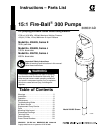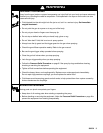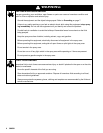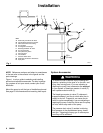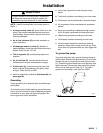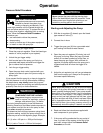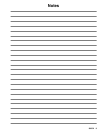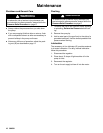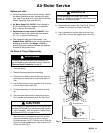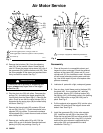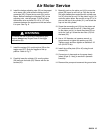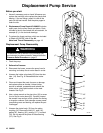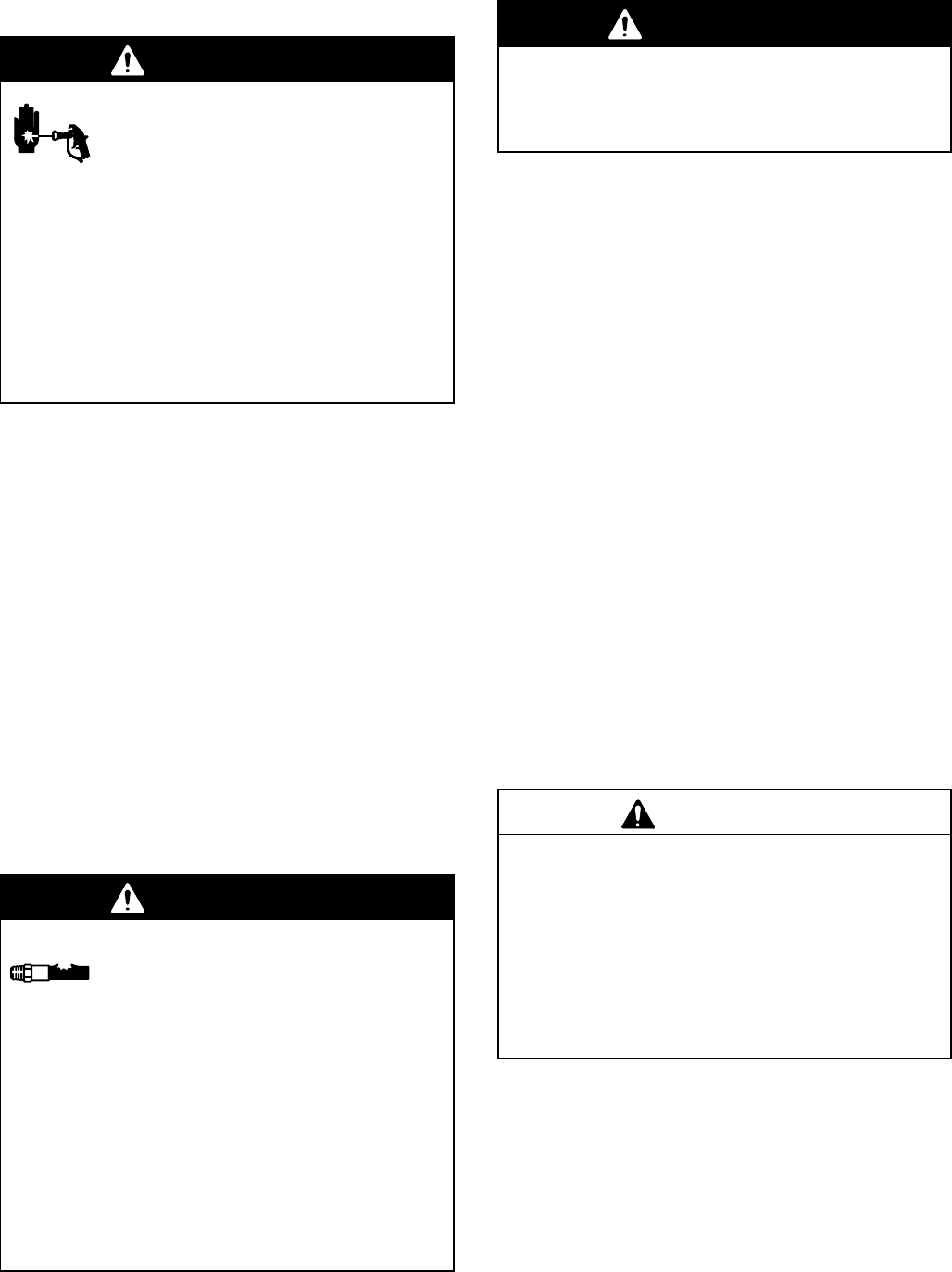
8 306531
Operation
Pressure Relief Procedure
WARNING
SKIN INJECTION HAZARD
The system pressure must be manually
relieved to prevent the system from
starting or spraying accidentally. Fluid
under high pressure can be injected through the
skin and cause serious injury. To reduce the risk of
an injury from injection, splashing fluid, or moving
parts, follow the Pressure Relief Procedure
whenever you:
D are instructed to relieve the pressure,
D stop spraying,
D check or service any of the system equipment,
D or install or clean the spray tips.
1. Lock the spray gun trigger safety.
2. Close the pump air regulator. Close the bleed-type
master air valve (required in your system).
3. Unlock the gun trigger safety.
4. Hold a metal part of the spray gun firmly to a
grounded metal waste container and trigger the
gun to relieve the fluid pressure.
5. Lock the gun trigger safety.
6. Open the pump drain valve (required with your
system) and leave it open until you are ready to
spray again.
If you suspect that the spray tip or hose is clogged or
that fluid pressure is not fully relieved after following
the steps above, very slowly loosen the tip guard
retaining nut or hose end coupling and relieve pressure
gradually. Clear the tip or hose obstruction.
WARNING
COMPONENT RUPTURE HAZARD
Overpressurizing any component can
result in rupture, fire, explosion, property
damage, and serious injury. To reduce
the risk of overpressurizing, know the Maximum
Working Pressure of the lowest rated component in
your system, and limit the air to the pump so that
you never exceed that pressure.
To determine the fluid output pressure using the air
regulator reading, multiply the pump ratio by the air
pressure you set on the regulator gauge. Example:
15 (:1) ratio x 100 psi air = 1500 psi fluid output
[15 (:1) ratio x 7 bar air = 105 bar fluid output]
WARNING
Never operate the pump with the warning plate
(20) or the identification plate (40) removed. These
plates protect your fingers from pinching or am-
putation by moving parts in the air motor.
Starting and Adjusting the Pump
1. With the air regulator (E) closed, open the bleed-
type master air valve (F).
2. Connect the air hose.
3. Trigger the spray gun (N) into a grounded metal
pail, making firm metal-to-metal contact.
4. Open the pump air regulator (E) slowly, just until
the pump is running. When the pump is primed
and all air has been pushed out of the lines, re-
lease the spray gun trigger. With sufficient air
supplied, the pump starts when the spray gun is
triggered and shuts off when the trigger is re-
leased.
5. Adjust the air regulator just until you get adequate
flow from the spray gun. Always run the pump at
the lowest speed necessary.
CAUTION
Never allow the pump to run dry of the fluid being
pumped. A dry pump will quickly accelerate to a high
speed, possibly damaging itself. If your pump acceler-
ates quickly, or is running too fast, stop it immediately
and check the fluid supply. If the supply container is
empty and air has been pumped into the lines, prime
the pump and lines with fluid, or flush it and leave it filled
with a compatible solvent. Be sure to eliminate all air
from the fluid lines. Use a pump runaway valve (K) to
automatically shut off the pump if it starts to run too fast.
6. Read and follow the instructions supplied with
each component in your system.
7. If the pump will be unattended for any period of
time, or to shut off the system at the end of the
work shift, always follow the Pressure Relief
Procedure, at the left.



